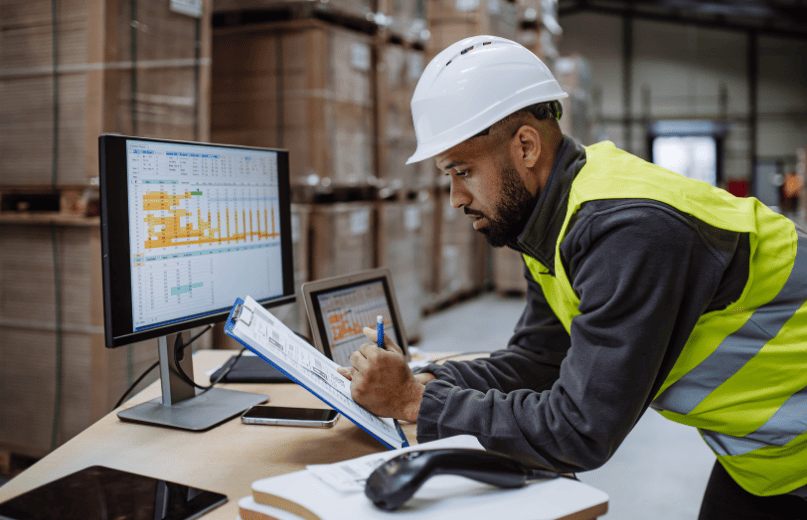
Key Differences Between Product Inspection and Product Testing
Many businesses consider product inspection and product testing similar, yet each serves a separate function within the quality control process. Inspection focuses on visual and functional verification during production. Testing evaluates material, safety, and performance requirements in a laboratory environment.

In this guide, we clearly explain the fundamental differences between product inspection and product testing, outline when each should be applied, and highlight why integrating both into your quality control strategy is vital for ensuring product reliability and regulatory adherence.
What is Product Inspection
Product inspection is the visual and functional evaluation of goods during different stages of production. It is carried out on site at factories, warehouses, or consolidation centers to confirm that finished or semi-finished units meet buyer requirements, specifications, and expected workmanship standards.
Inspectors follow structured checklists, measurements, sampling plans, and packaging reviews. The process identifies issues related to materials, workmanship, labeling accuracy, dimensions, and handling or packaging conditions. Inspection acts as a quality verification step that helps reduce defects before goods are shipped.
Common Types of Product Inspection
There are several types of product inspections, each designed to address different phases of production. The most common are:
- Pre-Production Inspection (PPI)
Conducted before production begins. It verifies raw materials, components, and the supplier’s preparedness. - During Production Inspection (DUPRO)
Performed when 20–60% of the production is complete. This helps detect early stage issues before the full run is finished. - Final Random Inspection (FRI)
The most common type, carried out once production is 100% complete and 80% packed. It’s the last gatekeeper before shipment. - Container Loading Inspection (CLI)
Ensures the correct products and quantities are loaded securely into shipping containers. Helps prevent mix ups, damage, or mislabeling. - First Article Inspection (FAI)
Typically done on the first unit out of production, especially for new or custom products.
Typical Objectives of Product Inspection
- To identify visual defects early and reduce rework or returns
- To verify compliance with product specifications and contractual obligations
- To minimize the risk of shipping defective goods to end customers
- To maintain brand consistency and customer trust
Inspection is commonly used by businesses sourcing from overseas factories to support visibility and maintain consistent product quality.
What is Product Testing
Product testing is a scientific evaluation carried out in a laboratory environment. It measures material properties, chemical composition, electrical performance, and physical durability. These tests determine whether a product meets regulatory and market-specific requirements.
Testing relies on laboratory instruments, calibrated equipment, and documented procedures. Samples may undergo mechanical stress, chemical analysis, environmental simulation, or electrical assessment. Some testing processes require destructive methods to evaluate durability and safety.
Testing categories include physical performance, chemical composition, mechanical integrity, and electrical behavior. Laboratories follow protocols aligned with ISO, IEC, EN, ASTM, CPSIA, and other regulatory frameworks.
Types of Product Testing
Depending on the product category and target market, various forms of testing are applied:
- Mechanical Testing
Evaluates structural integrity, durability, and physical strength. Examples: tensile strength, drop tests, compression, torque resistance. - Chemical Testing
Identifies hazardous substances, chemical stability, or compliance with restricted substance lists (RSL). Essential for cosmetics, plastics, metals, coatings, and food contact materials. - Electrical Testing
Used for devices and components. Tests insulation resistance, grounding, power consumption, short circuit protection, and electromagnetic compatibility (EMC). - Performance Testing
Assesses real world use case functionality. For instance, how a rain jacket performs in simulated rainfall, or how a battery performs over its lifecycle. - Regulatory Compliance Testing
Ensures the product meets laws and standards for a specific market, such as:
Testing is often mandatory for products entering regulated markets, particularly in sectors like healthcare, electronics, toys, and food.
Common Use Cases and Product Categories
Product testing applies across a vast range of industries. Some examples include:
- Textiles & Apparel
Colorfastness, pH levels, flammability, azo dyes, and fiber composition. - Consumer Electronics
Electrical safety, EMI/EMC, battery performance, overheating risk. - Children’s Products & Toys
Small parts, heavy metals (lead, cadmium), mechanical safety, choking hazards. - Packaging Materials
Migration testing for food safety, strength and seal integrity for transport. - Automotive & Industrial Components
Stress testing, corrosion resistance, fatigue life, vibration analysis.
Product Inspection vs Product Testing
| Key Aspect | Product Inspection | Product Testing |
|---|---|---|
| Purpose and Timing | Conducted before, during, and after production to verify appearance, workmanship, labeling, and basic functionality. Used as a real-time quality control step. | Conducted on prototypes or final products to verify safety, materials, and technical performance according to standards. Often required for compliance. |
| Methodology | Uses visual checks, measurements, functional checks, and packaging verification based on AQL sampling. Goods are not damaged. | Uses laboratory instruments and scientific methods. May include destructive testing to assess durability, chemicals, electrical safety, or performance. |
| Expertise and Environment | Performed on site by trained inspectors familiar with QC checklists, defect classifications, and production processes. | Performed by engineers or lab technicians in controlled laboratory environments following technical standards. |
| Output and Reporting | Generates an inspection report with pass or fail results, defect photos, measurements, and AQL evaluation. | Generates a test report or certificate with numeric results, standards used, and laboratory accreditation details. Often required for regulatory submission. |
ECQA Product Inspection and Testing Services in China
ECQA provides product inspection, laboratory testing, and compliance support in China and other major manufacturing regions. Inspection teams cover locations such as China, Vietnam, India, and Turkey. Inspectors follow AQL plans, structured checklists, and international quality guidelines.
Our accredited laboratories perform testing for softlines, hardlines, toys, electrical products, and regulated materials. Capabilities include chemical testing, mechanical analysis, EMC evaluation, RoHS and REACH assessment, and EN 71 testing for toys. Reports follow international regulatory requirements.
Contact us today to arrange product inspection or schedule laboratory testing in China.

 Request Free Sample Report
Request Free Sample Report